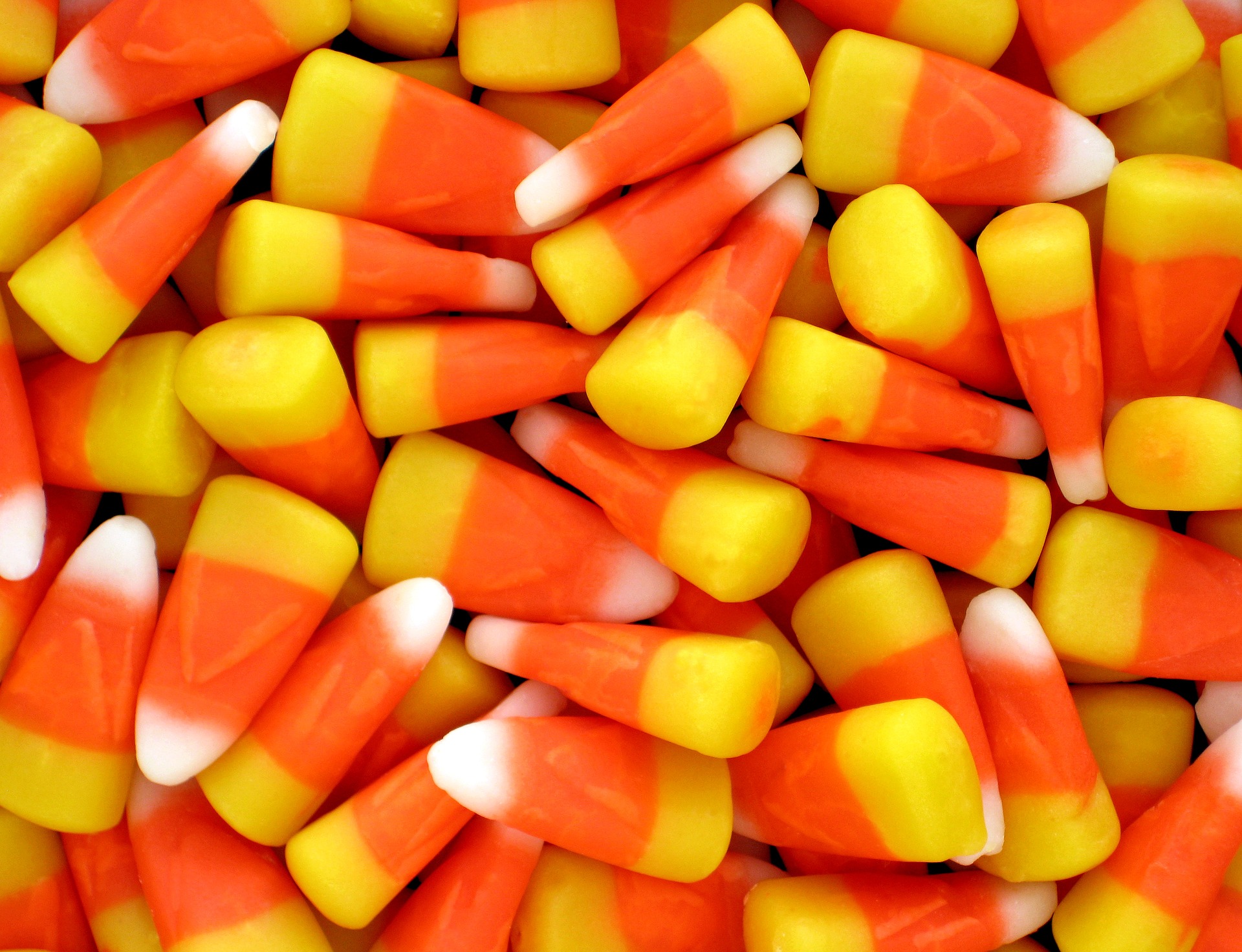It’s interesting how candy corn has become such a Halloween staple considering, A – It’s available year-round, B – many people hate it, and C – candy corn doesn’t come individually wrapped, making it a poor choice to hand out to trick-or-treaters.
Nevertheless, millions of pounds of the sugary treat are sold every year, about three-quarters of which are around Halloween.
I didn’t realize it when I chose this topic for today’s post, but today happens to be National Candy Corn Day.
Although it hasn’t been proven, candy corn is believed to have been invented by a man named George Renniger of the Wunderlee Candy Company in Philadephia during the 1880s.
His creation consisted of sugar, fondant, corn syrup, vanilla flavor, and marshmallow cream. The sweet mixture was melted, dyed its signature colors, and then poured into rows of trays of kernel molds – a laborious process before machines took over.
In 1898, the Goelitz Candy Company acquired the recipe from Wunderlee and began popularizing the candy under the name “chicken feed.”
At the time, corn was exactly that, and was not as widely consumed by humans as it is today. The food item was also marketed as a buttered candy, but this was later changed due to the fact there is no butter in candy corn.
Because the process of making the candy was so exacting, Goelitz only produced the treat from March through November. Even so, the candy corn/chicken feed was an instant success, and rival companies soon turned out their own vegetable-shaped “mellowcreme” candies, including turnips. Of course, that wasn’t quite the same.
World War I, the Great Depression, and World War II were difficult times for the Goelitz Candy Company. The Goelitz family hailed from Germany, and there was a strong anti-German sentiment running through America during the first World War.
The Great Depression is self-explanatory, and then World War II saw a sugar ration, limiting candy production for everyone.
But candy corn kept Goeltiz in business.
During the 1940s when World War II was coming to an end, Goelitz and other companies began packaging candy corn in clear, cellophane bags – this extended the shelf life, allowing Goelitz to ship the candy farther away.
Indeed, as the years went by, and varying candy trends came and went, candy corn held strong – even the same recipe is still used today.
Today, Goelitz is now Jelly Belly. Brach’s is the other main company who manufactures candy corn, and they have surpassed Jelly Belly in candy corn sales.
Of course, the candy is now made from machines, eliminating the tedious labor work for employees, so they are able to be created all year round.
In addition, candy corn is now used to celebrate holidays other than Halloween. We have Indian corn for Thanksgiving, reindeer corn for Christmas, cupid corn for Valentines Day, and bunny corn for Easter.
Interestingly, many people in fact hate this candy.
And yet it has survived – and even thrived – for so long.
A 2011 Facebook survey conducted by The Today Show found candy corn to be the second most hated Halloween candy, behind Mary Janes. A 2013 survey carried out by the National Confectioners Association reported that only 12% of people consider candy corn their top Halloween treat.
Other surveys have been performed that essentially draw the same conclusion: a lot of people do not like candy corn, calling it too sweet and flavorless, among other negative descriptions.
As for me, I’m in the love-it camp. I don’t know why.
I don’t normally enjoy overly sweet things, but there is just something about candy corn. . .
If you love it like I do, here are some fun candy corn recipes to try:
- Homemade Candy Corn
- Candy Corn and White Chocolate Softbatch Cookies
- Candy Corn Bark
- Candy Corn Rice Krispie Treats
- Candy Corn Cocktail
- Candy Corn Jell-O Shots
- Deep Fried Candy Corn
Although candy corn is terrible for your teeth, health-wise it’s actually one of the better candy choices, with no fat and few calories.
Another benefit: the shelf life. If unopened, candy corn can keep for nine months. If opened and covered, away from light and heat, it can last up to six months.
